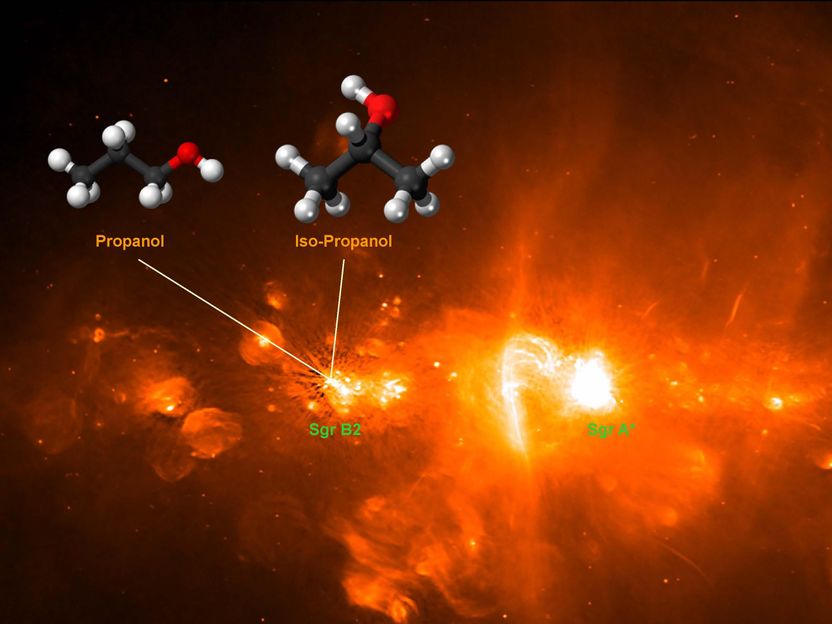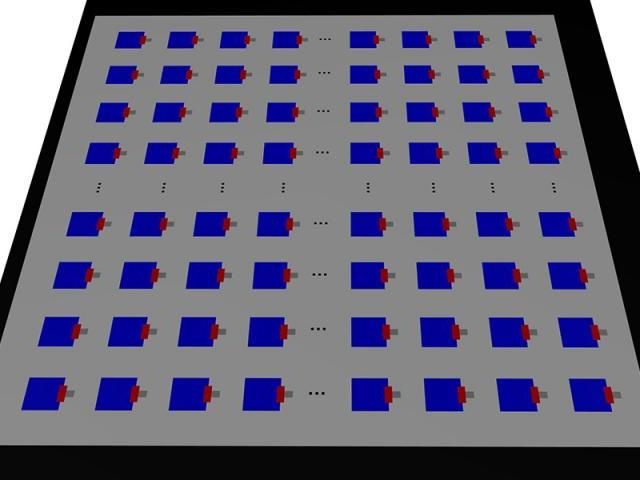Chasing tiny vehicles
Microscope shows how nanoferries invade cells
nanoparticles are just billionths of a millimeter in size. Exhibiting novel and often surprising properties, they are finding their way into an endless stream of equally innovative products. In medical therapies, for example, tiny nanovehicles could one day ferry drugs or even genes into cells. So far, the only way of testing these approaches has been to wait for the desired effect to show – the activation of a transported gene inside a cell for example. Under the direction of LMU Munich physicochemist Professor Christoph Bräuchle, a research group cooperating with Dr. Christian Plank of the Technische Universität München (TUM) has now used a highly sensitive microscopic technique to pursue individual nanoparticles as they make their way into target cells – in real-time and at high spatial and temporal resolution. They tested magnetic nanoparticles that could be used, among other things, in cancer therapy. This approach should also allow a better understanding of existing nanovectors as well as the development of new systems, as reported in the current cover story of the Journal of Controlled Release.
Nanoparticles are so small that many barriers in the body simply can't stop them. They can also use the bloodstream to reach any part of the body. Researchers and doctors alike hope that these tiny vehicles will one day be put to work in therapies carrying drugs directly to the seat of a disease. "Even genes can be transported this way," says Plank. "That means we could be seeing new breakthroughs in gene therapy soon, which has seen more than its fair share of setbacks. After all, lacking most are functional transporters." Such vehicles or vectors have been developed mainly from viruses until now. But even deactivated viruses can sometimes trigger unwanted side-effects. Nanoferries, on the other hand, have been tailored to deliver genes or drugs directly to the target without side-effects.
For such a targeted delivery, however, nanoferries need a kind of search mechanism to guide them to where their cargo is needed. Magnetic particles have already been tried in cancer therapies: They have been administered by infusion and then directed – via magnetic fields – to a tumor whose cells they should invade directly. But until now, is has been impossible to observe nanoparticles along their route, especially into living tumor cells. It is a prerequisite, though, for therapeutic approval and the definition of functional doses to know the exact path of these carriers and the efficiency of their transport and uptake by cancer cells.
So far, only the appearance or absence of the desired therapeutic effect would tell whether an approach was even promising or not. "It's like a black box," Bräuchle says. "You put something in at one end, then wait and see if anything comes out at the other end. What happens in between is anyone's guess." Now, his workgroup has employed highly sensitive single-molecule fluorescence microscopy to follow the nanoferries on their voyage. This highly sensitive method works by tagging individual particles with a dye that acts like a "molecular lamp" to light up the particle's path into the cell.
"Thus, we have traced magnetic lipoplex nanoparticles and made movies of their transport," reports Anna Sauer, first author of the study. "We were able to watch the particles in real-time and at high temporal and spatial resolution as they made their way into the cells." In doing so, the research team could even define separate phases: how the particles reached the cell membrane, came to rest there and then ultimately – enclosed in a membrane vesicle – invaded the cells. The vesicles move randomly, often downright erratically inside the cell, until a so-called motor protein binds them and quickly transports them towards the cell nucleus – the ultimate target for the gene.
The research team is now in a position to characterize and describe in great detail the individual steps along this path. "Our new approach has also revealed bottlenecks in nanoferry transport," Bräuchle reports. "We saw, for example, that the magnetic field can only direct particles outside cells. But, contrary to expectations, it did not facilitate entry into cells. Thanks to these new insights, existing nanoferries can be suitably optimized in future, and even new systems developed."
Original publication: A.M. Sauer et al.; "Dynamics of magnetic lipoplexes studied by single particle tracking in living cells"; Journal of Controlled Release, 20 July 2009
Topics
Organizations
Other news from the department research and development
These products might interest you

NANOPHOX CS by Sympatec
Particle size analysis in the nano range: Analyzing high concentrations with ease
Reliable results without time-consuming sample preparation

Eclipse by Wyatt Technology
FFF-MALS system for separation and characterization of macromolecules and nanoparticles
The latest and most innovative FFF system designed for highest usability, robustness and data quality

DynaPro Plate Reader III by Wyatt Technology
Screening of biopharmaceuticals and proteins with high-throughput dynamic light scattering (DLS)
Efficiently characterize your sample quality and stability from lead discovery to quality control

Get the chemical industry in your inbox
By submitting this form you agree that LUMITOS AG will send you the newsletter(s) selected above by email. Your data will not be passed on to third parties. Your data will be stored and processed in accordance with our data protection regulations. LUMITOS may contact you by email for the purpose of advertising or market and opinion surveys. You can revoke your consent at any time without giving reasons to LUMITOS AG, Ernst-Augustin-Str. 2, 12489 Berlin, Germany or by e-mail at revoke@lumitos.com with effect for the future. In addition, each email contains a link to unsubscribe from the corresponding newsletter.
Most read news
More news from our other portals
Last viewed contents
LANXESS streamlines global production network - Divestment of Chinese joint venture stake and U.S. site
Tyrosinase
Johnson Matthey Commissions New High Containment Manufacturing Capacity in Edinburgh, UK

A Sanitizer in the Galactic Centre Region - Interstellar Detection of Iso-Propanol in Sagittarius B2

Tiny graphene radios may lead to Internet of Nano-Things
URB597

“Sustainable Recycling Industries” – a new approach for developing countries

Researchers bridge the gap between disciplines to better understand chemical reactions
Aurea_Alexandrina





























































